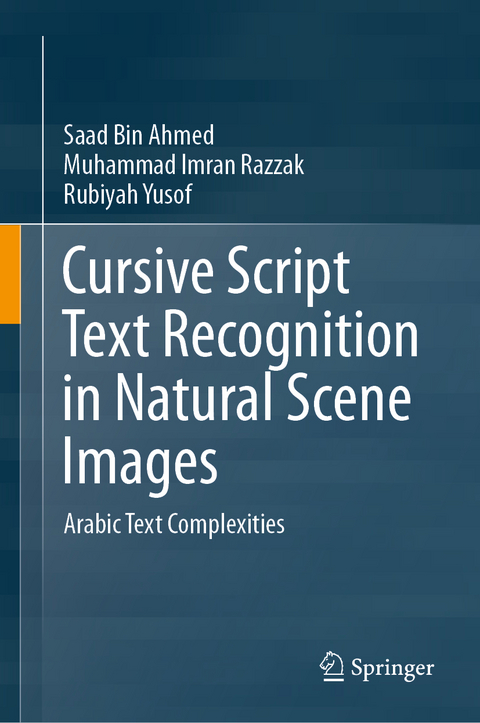
Cursive Script Text Recognition in Natural Scene Images
Springer Verlag, Singapore
978-981-15-1296-4 (ISBN)
Dr. Saad Bin Ahmed is a lecturer at King Saud bin Abdulaziz University for Health Sciences, Riyadh, Saudi Arabia (KSAU-HS). He is also associated with Center of Artificial Intelligence and Robotics (CAIRO) research lab at the Malaysia-Japan International Insitute of Technology (M-JIIT), Universiti Teknologi Malaysia, Kuala Lumpur, Malaysia. He completed his Ph.D. in Intelligent Systems at the Universiti Teknologi Malaysia in 2019. Before that, he completed his Master of Computer Science in Intelligent Systems at the Technische Universität, Kaiserslautern, Germany, and was a research assistant at the Image Understanding and Pattern Recognition Research Group at the same university. His areas of interests are document image analysis, machine learning, computer vision, and optical character recognition. He has authored more than 25 research articles in leading journals and conferences, as well as book chapters. Dr. Muhammad Imran Razzakis associated with the University of Technology Sydney, Australia. Previously, he was an Associate Professor at King Saud bin Abdulaziz University for Health Sciences. He holds a patent and is also the author of more than 70 papers in respected journals and conferences. He has secured research grants of more than $1.3 million, and has successfully developed and delivered several research projects. His areas of research include machine learning, document image analysis, and health informatics. Prof. Dr. Rubiyah Yusof is a director at (CAIRO) M-JIIT, Universiti Teknologi Malaysia, Kuala Lumpur, Malaysia. She received her master’s degree in Control Systems from Cranfield Institute of Technology, United Kingdom, in 1986, and her Ph.D. in Control Systems from the University of Tokushima, Japan, in 1994. Throughout her career, Dr. Yusof has made significant contributions to artificial intelligence, process control, and instrumentation design.She is recognized for her work in biometrics systems, such as KenalMuka (face recognition system) and a signature verification system, which won both national and international awards. She is the author of the book Neuro-Control and its Applications published by Springer-Verlag, in 1995, which was translated to Russian in 2001. Professor Dr Yusof is a member of the AI Society Malaysia, Instrumentation and Control Society Malaysia, and Institute of Electrical and Electronics Engineers Malaysia.
Foundations of Cursive Scene Text.- Text in a wild and it’s Challenges.- 3 Arabic Scene Text Acquisition and Statistics.- Methods and Algorithm.- Progress in Cursive Wild Text Recognition.- Conclusion and Future Work.
| Erscheinungsdatum | 04.02.2020 |
|---|---|
| Zusatzinfo | 57 Illustrations, color; 6 Illustrations, black and white; XV, 111 p. 63 illus., 57 illus. in color. |
| Verlagsort | Singapore |
| Sprache | englisch |
| Maße | 155 x 235 mm |
| Themenwelt | Informatik ► Datenbanken ► Data Warehouse / Data Mining |
| Informatik ► Theorie / Studium ► Künstliche Intelligenz / Robotik | |
| ISBN-10 | 981-15-1296-5 / 9811512965 |
| ISBN-13 | 978-981-15-1296-4 / 9789811512964 |
| Zustand | Neuware |
| Haben Sie eine Frage zum Produkt? |
aus dem Bereich


